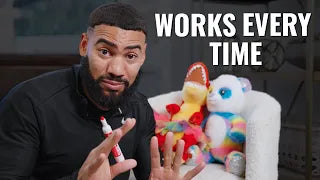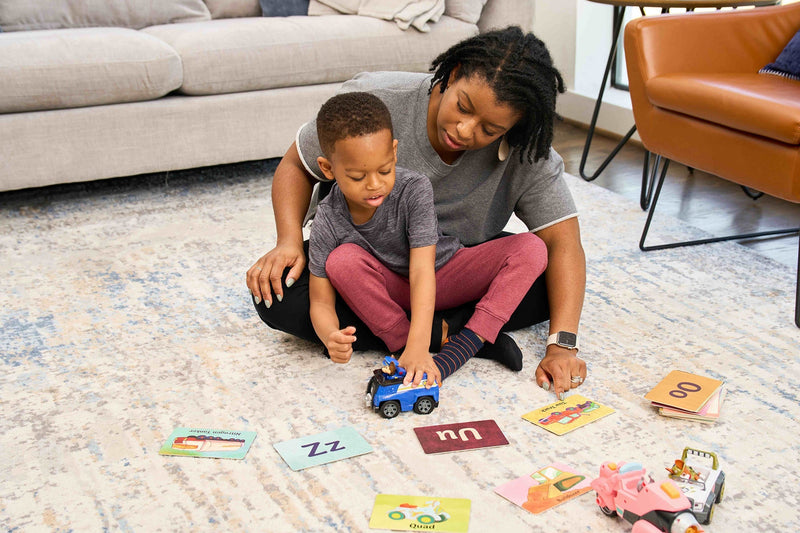You may know a few things about vowels already. For example, you may know that the vowels are A, E, I, O, U (and sometimes Y.) Or that vowels are the opposite of consonants.
But for our purposes here, we aren't concerned with which letters count as vowels or what rules you learned in school. Instead, we're focused only on what SOUNDS those letters make. (Read more here about what I mean by letter sounds.)
There are many vowel sounds (think about all the sounds those letters can make in different words). We're going to make this super simple and divide these sounds into two basic groups: short vowel sounds vs. long vowel sounds.

What is the difference between short and long vowel sounds?
OK, so let's make one thing clear: English is a confusing language. And there are a lot of letters that can make multiple sounds (like how the letter Cc makes the /k/ sound in "cat" but the /s/ sound in "city.")
And the vowels are no different. In some words, they say their "short" sound, and in other words, they say their "long" sound. Check the chart below for examples of the short vowel vs. long vowel sounds:

Note: If you read the chart and are still confused about the difference between short and long vowel sounds... the most common way folks describe the long vowel sounds is, "the long vowels say their name." And with the exception of the letter Y, this rule will hold true.
Can you teach short and long vowel sounds at the same time?
Great question. And there's a super simple answer here: You can, but you might not want to.
Imagine you're teaching someone to cook for the first time and want them to learn how to cook an egg. There are a million ways to cook an egg: You can scramble it, fry it, souffle it, and so on. But if they're just learning how to cook and are brand new to eggs, you'd probably overwhelm them if you tried to teach them everything at once, right? Plus, they probably wouldn't do any of it well with so many different recipes and rules floating around in their head.
So what do we do instead? We start with the basics. We make sure they know how to scramble an egg and that they're confident with the easiest and most common dish before we move on to teaching the harder and less common ones.
And in terms of vowel sounds, you certainly can teach both at once. But like the cooking analogy, you may leave your child overwhelmed, confused, and not understanding any of the sounds very well.
This is why I recommend mastering the basics (short vowel sounds) first before moving on to the more advanced stuff (long vowel sounds) after.
Side note: this isn't my first egg-related analogy.
Should you teach short or long vowel sounds first?
There are three reasons I start with the short vowel sounds first:
- Short vowel sounds are usually easier to say.
- Short vowel sounds are more common for beginning readers.
- Long vowel sounds often include a more advanced spelling pattern.
And think about it like this: When you're just getting started teaching your little one to read, it will be challenging. There are times when they will have trouble understanding the sounds or the words and times when you will have trouble teaching them. That's completely normal.
But the beauty of learning these short vowel sounds first is that they are the heart of so many of the words your little one will see when they're reading. And knowing these short vowel sounds will be one of the biggest keys to their success in reading their first words.

And once your little one reads those first words, their confidence will grow. Your confidence will grow. And even though there are plenty of other long vowel sounds still to learn, your little one will be READING words on their own. And that's such an important step for a beginning reader.
What if they notice the other sounds the vowels make?This will happen sooner or later, and I would approach it just like I do with any more advanced sounds that they have not learned yet.
Meaning it's not a big deal. We affirm that they're right- that the sound is different- and let them know that they'll learn more about that letter's other sounds soon.
Kid: "Wait a minute...you said that A says "ah" but in the word MAKE it's saying "A."
Parent: "Yes, you're right! The letter A can make the 'A' sound too! And we'll learn even more about its different sounds soon. But for now, we're going to focus on the job of A when it says 'ah' like in cat."
In short: Teach short vowel sounds first!
Not only will you save your little one the trouble of having to memorize a bunch of complicated spelling patterns before they're ready for it. But you'll help build their confidence and get them reading their first words faster than if you focused on teaching both at the same time.
And while this advice is simple and to the point, actually teaching those sounds is a different skill; if you want my most detailed, step-by-step support, you can sign up for my Learning Sounds Course.
Either way, I'm here to support you and your little one in this journey as best as I can!









